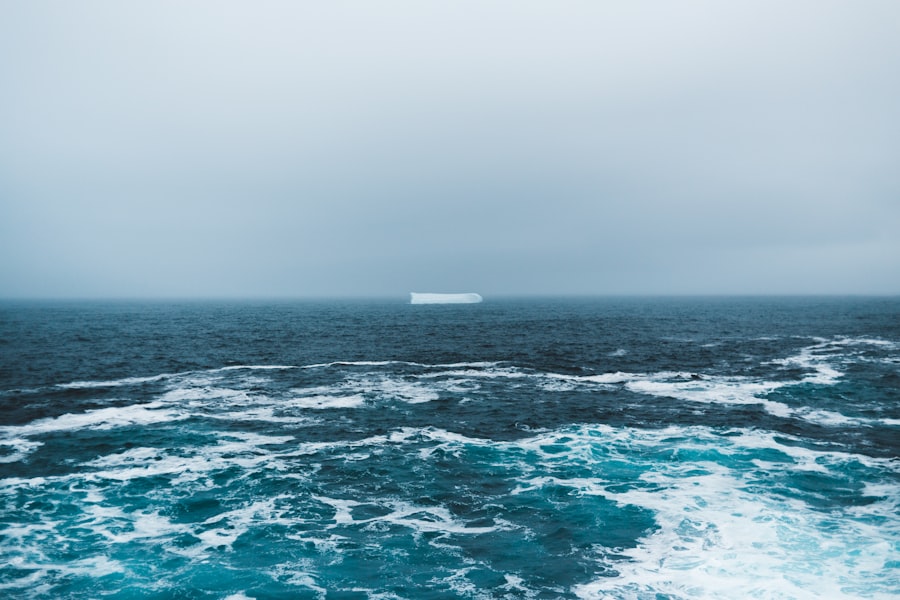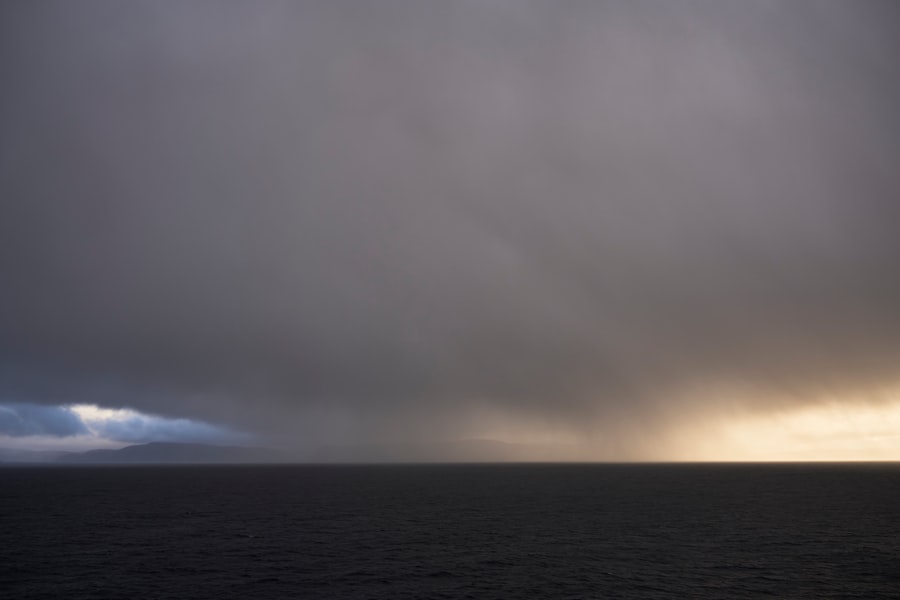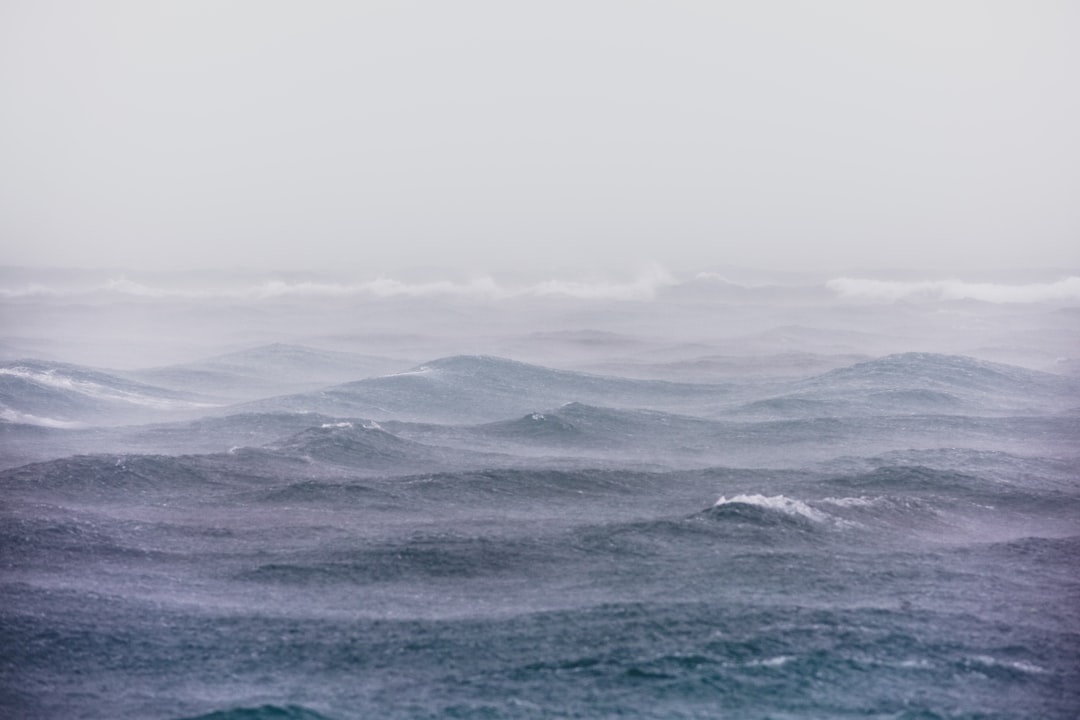The Drake Passage, a body of water situated between the southern tip of South America and Antarctica, is notorious for its unpredictable weather and tumultuous seas. For mariners and travelers alike, understanding the significance of weather forecasting in this region is paramount. The passage is often characterized by strong winds, high waves, and rapidly changing conditions, making accurate weather predictions essential for safe navigation.
Weather forecasting serves as a critical tool that enables sailors to anticipate potential hazards, plan their routes effectively, and ensure the safety of their vessels and crew. Moreover, the importance of weather forecasting extends beyond mere navigation; it also plays a vital role in the overall experience of those traversing the Drake Passage. For expedition cruise operators and researchers, having reliable weather information can dictate the success of their missions.
Whether it’s ensuring that passengers can safely disembark for excursions or conducting scientific research in optimal conditions, accurate forecasts are indispensable. Thus, understanding the nuances of weather patterns in the Drake Passage is not just a matter of safety; it is integral to the very essence of maritime exploration in this challenging environment.
Key Takeaways
- Weather forecasting is crucial for safe navigation through the Drake Passage due to its unpredictable and severe weather conditions.
- The impact of weather on navigating the Drake Passage can range from strong winds and high waves to icebergs and fog, making accurate forecasting essential for safe passage.
- Key weather patterns to watch for in the Drake Passage include low-pressure systems, strong westerly winds, and rapidly changing conditions.
- Utilizing technology such as satellite imagery, weather buoys, and computer models is essential for accurate weather forecasting in the Drake Passage.
- Strategies for planning a safe passage based on weather forecast include choosing the optimal route, adjusting speed, and seeking shelter in case of severe weather.
The Impact of Weather on Navigating the Drake Passage
Weather conditions in the Drake Passage can dramatically influence navigation strategies and decisions. The region is infamous for its fierce storms and unpredictable squalls, which can arise with little warning. These sudden changes can lead to treacherous sailing conditions, including towering waves and gale-force winds that can easily overwhelm even experienced crews.
As a result, mariners must remain vigilant and responsive to real-time weather updates to navigate safely through these perilous waters. In addition to immediate safety concerns, weather also affects the overall efficiency of maritime operations in the Drake Passage. For instance, adverse weather can lead to delays in travel schedules, forcing vessels to alter their routes or wait for calmer conditions before proceeding.
This unpredictability can have cascading effects on logistics, impacting everything from supply deliveries to passenger itineraries. Therefore, understanding how weather influences navigation is crucial for both operational planning and ensuring a smooth journey across this formidable stretch of ocean.
Key Weather Patterns to Watch for in the Drake Passage

Navigators must be aware of several key weather patterns that frequently occur in the Drake Passage. One of the most significant phenomena is the presence of the Roaring Forties, a belt of strong westerly winds that can create challenging sailing conditions. These winds are often accompanied by large swells and rough seas, making it essential for sailors to monitor wind speeds and directions closely.
Understanding when these winds are likely to intensify can help crews prepare for potential turbulence. Another critical aspect of weather patterns in the Drake Passage is the occurrence of low-pressure systems. These systems can bring heavy precipitation and rapidly changing conditions, leading to fog and reduced visibility.
Mariners must be particularly cautious during these times, as navigating through fog can be perilous without proper instruments and experience. By recognizing these key weather patterns, sailors can better anticipate challenges and make informed decisions about their routes and timing.
Utilizing Technology for Accurate Weather Forecasting
| Technology | Advantages | Challenges |
|---|---|---|
| Satellite Imaging | Provides real-time data, helps track weather patterns | Costly to maintain, vulnerable to technical issues |
| Radar Systems | Offers detailed precipitation information | Limited range, can be affected by interference |
| Computer Models | Allows for complex simulations, improves accuracy | Dependent on quality of input data, requires constant updates |
| Weather Stations | Provides localized data, essential for ground-level observations | Requires regular maintenance, limited coverage |
In recent years, advancements in technology have significantly enhanced the accuracy of weather forecasting in the Drake Passage. Modern meteorological tools, such as satellite imagery and advanced computer modeling, allow forecasters to analyze atmospheric conditions with unprecedented precision. These technologies enable mariners to receive real-time updates on weather changes, providing them with critical information needed to navigate safely through this volatile region.
Additionally, mobile applications and onboard weather stations have become invaluable resources for sailors operating in the Drake Passage. These tools provide instant access to localized forecasts, allowing crews to make informed decisions based on current conditions rather than relying solely on outdated information. As technology continues to evolve, it is likely that weather forecasting will become even more sophisticated, further improving safety and efficiency for those navigating these challenging waters.
Strategies for Planning a Safe Passage Based on Weather Forecast
Planning a safe passage through the Drake Passage requires careful consideration of weather forecasts and strategic decision-making. One effective strategy is to establish flexible itineraries that allow for adjustments based on real-time weather conditions. By building in contingency plans, crews can avoid dangerous situations and ensure that they are not caught off guard by sudden changes in weather.
Another important strategy involves thorough pre-voyage planning that includes an analysis of historical weather data for the time of year. Understanding seasonal trends can help mariners anticipate potential challenges and prepare accordingly. This proactive approach allows crews to equip their vessels with the necessary supplies and safety gear while also ensuring that they are mentally prepared for the unique challenges posed by navigating through one of the world’s most unpredictable maritime environments.
The Role of Experienced Captains and Crew in Navigating the Drake Passage

The expertise of experienced captains and crew members is invaluable when navigating the Drake Passage. Their knowledge of local conditions, combined with years of practical experience, equips them with the skills necessary to make quick decisions in response to changing weather patterns. An experienced captain can interpret weather forecasts effectively, understanding not only what the data indicates but also how it translates into real-world conditions on the water.
Moreover, seasoned crew members play a crucial role in maintaining safety aboard vessels traversing the Drake Passage. Their training allows them to respond swiftly to emergencies that may arise due to sudden weather changes. From managing sails during high winds to ensuring that safety protocols are followed during rough seas, a well-trained crew is essential for mitigating risks associated with navigating this challenging region.
Emergency Preparedness in the Face of Unpredictable Weather
Given the unpredictable nature of weather in the Drake Passage, emergency preparedness is a critical component of maritime operations. Vessels must be equipped with comprehensive safety equipment, including life rafts, emergency beacons, and first aid supplies. Regular drills should be conducted to ensure that all crew members are familiar with emergency procedures and can act swiftly if a crisis arises.
In addition to physical preparedness, having a well-defined communication plan is essential for managing emergencies effectively. This includes establishing protocols for reporting severe weather conditions and coordinating with other vessels or rescue services if necessary. By prioritizing emergency preparedness, crews can enhance their resilience against the unpredictable challenges posed by navigating through one of the world’s most formidable maritime passages.
How Weather Forecasting Impacts Itinerary Planning in the Drake Passage
Weather forecasting plays a pivotal role in shaping itinerary planning for voyages through the Drake Passage. Expedition operators must consider not only current conditions but also long-term forecasts when designing their routes. This foresight allows them to optimize travel schedules while minimizing risks associated with adverse weather.
Furthermore, accurate weather predictions enable operators to provide passengers with realistic expectations regarding their journey. By communicating potential challenges related to weather variability, operators can foster a sense of preparedness among travelers. This transparency enhances passenger satisfaction while ensuring that everyone aboard understands the importance of flexibility when navigating through this unpredictable region.
Tips for Passengers to Prepare for Weather Variability in the Drake Passage
For passengers embarking on a journey through the Drake Passage, preparation is key to ensuring a comfortable experience despite potential weather variability. One essential tip is to pack layered clothing that can accommodate fluctuating temperatures and conditions. The ability to add or remove layers as needed will help travelers stay comfortable throughout their voyage.
Additionally, passengers should familiarize themselves with safety protocols provided by the crew before setting sail. Understanding emergency procedures and knowing where safety equipment is located can provide peace of mind during turbulent moments at sea. By taking proactive steps to prepare for potential weather challenges, passengers can enhance their overall experience while navigating this remarkable yet unpredictable maritime environment.
The Importance of Flexibility in Navigating the Drake Passage Based on Weather Forecast
Flexibility is perhaps one of the most critical attributes required when navigating the Drake Passage. Given its reputation for sudden weather changes, mariners must be willing to adapt their plans based on real-time forecasts and conditions at sea. This adaptability not only enhances safety but also allows crews to seize opportunities for exploration when favorable weather presents itself.
Moreover, flexibility extends beyond navigation; it also applies to passenger experiences during voyages through the Drake Passage. Operators who embrace a flexible approach can adjust itineraries based on prevailing conditions, ensuring that travelers have access to unique experiences while prioritizing their safety. By fostering an environment where flexibility is valued, both crews and passengers can navigate this challenging passage with confidence.
The Future of Weather Forecasting in the Drake Passage: Advancements and Challenges
As technology continues to advance, the future of weather forecasting in the Drake Passage holds great promise but also presents challenges. Innovations such as artificial intelligence and machine learning are poised to revolutionize how meteorologists analyze data and predict weather patterns in this complex region. These advancements could lead to even more accurate forecasts, enhancing safety for mariners navigating these treacherous waters.
However, challenges remain in ensuring that all vessels have access to reliable forecasting tools and information. Smaller operators may struggle with limited resources or outdated technology, which could hinder their ability to respond effectively to changing conditions. Addressing these disparities will be crucial as maritime operations continue to evolve in response to climate change and increasing traffic through this vital passageway.
By leveraging technology, prioritizing emergency preparedness, and fostering flexibility among crews and passengers alike, those who traverse this formidable body of water can enhance their experiences while mitigating risks associated with its unpredictable nature.
If you’re planning a journey through the Drake Passage, it’s crucial to stay updated on the latest weather forecasts to ensure a safe and smooth voyage. The Drake Passage is notorious for its unpredictable and often harsh weather conditions, which can significantly impact travel plans. For more detailed insights and tips on navigating this challenging route, you might find this related article on MyGeoQuest particularly helpful. It provides valuable information on what to expect and how to prepare for the varying weather patterns you might encounter.
WATCH NOW! Drake Passage: Earth’s Deadliest Waters Revealed
FAQs
What is the Drake Passage?
The Drake Passage is the body of water between the southern tip of South America and the northern tip of the Antarctic Peninsula. It is known for its rough seas and challenging weather conditions.
Why is the weather in the Drake Passage so unpredictable?
The weather in the Drake Passage is influenced by the meeting of the cold Antarctic air and the warmer air from the north. This creates strong winds, high waves, and rapidly changing weather patterns, making it difficult to predict.
What are the typical weather conditions in the Drake Passage?
The weather in the Drake Passage is characterized by strong winds, rough seas, and rapidly changing conditions. Storms and low-pressure systems are common, leading to challenging sailing conditions.
How is the weather forecast for the Drake Passage determined?
The weather forecast for the Drake Passage is determined using a combination of satellite data, weather models, and observations from ships and research stations in the region. Forecasters take into account the unique weather patterns and the influence of the surrounding landmasses.
What are the best sources for obtaining a weather forecast for the Drake Passage?
The best sources for obtaining a weather forecast for the Drake Passage are official meteorological services, such as the National Weather Service in the United States or the Met Office in the United Kingdom. Additionally, many shipping companies and research organizations provide specialized forecasts for the region.
